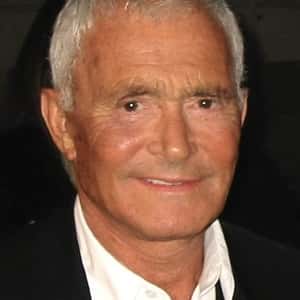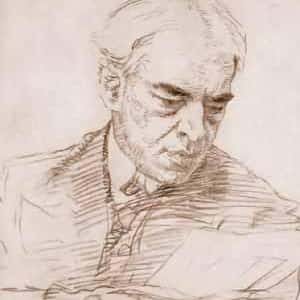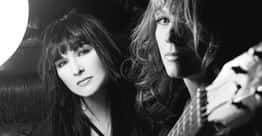January 17 isn't just another day on the calendar—it's a star-studded birthday bash! This list celebrates the famous faces who blow out their candles on this special day, showcasing a diverse array of talents from film, such as Zooey Deschanel, music, like Calvin Harris, sports, such as Muhammad Ali, and more. Whether it’s actors who’ve graced the silver screen or musicians, like Kid Rock, who've topped the charts, each has made significant contributions to their fields. Here’s a look at some celebrities and historical figures both living and deceased sharing this birthday, highlighting not just their achievements but also adding a sprinkle of fun facts to jazz up your day.
- Iolanda Cristina Gigliotti (Italian: [joˈlanda kriˈstiːna dʒiʎˈʎɔtti]; 17 January 1933 – 3 May 1987), professionally known as Dalida (Egyptian Arabic: داليدا), was a French singer and actress, born in Egypt to Italian parents. She won the Miss Egypt beauty contest in 1954 and began a 31-year singing career in 1956, selling 170 million albums and singles worldwide. She committed suicide in 1987.More Dalida
- #332 of 341 onThe Best Female Vocalists Ever
- #135 of 137 onThe Female Singer You Most Wish You Could Sound Like
- #11 of 26 onFamous Women Who Committed Suicide
- Corinne Kaplan is a former contestant on the reality television show Survivor: Gabon.
- Stanislav Galiev (born 17 January 1992 in Moscow, Russia) is a Russian professional ice hockey right winger who is currently playing for Ak Bars Kazan in the Kontinental Hockey League (KHL). He previously played for the Washington Capitals of the National Hockey League (NHL).
- Stephen Fain Earle () (born January 17, 1955) is an American rock, country and folk singer-songwriter, record producer, author and actor. Earle began his career as a songwriter in Nashville and released his first EP in 1982. His breakthrough album was the 1986 album Guitar Town. Since then Earle has released 15 studio albums and received three Grammy awards. His songs have been recorded by Johnny Cash, Waylon Jennings, Willie Nelson, The Highwaymen (country supergroup), Travis Tritt, Vince Gill, Patty Loveless, Shawn Colvin, Bob Seger, Ian Stuart Donaldson and Emmylou Harris. He has appeared in film and television, and has written a novel, a play, and a book of short stories.More Steve Earle
- #113 of 203 onThe Greatest Living Rock Songwriters
- #117 of 243 onThe Top Country Artists of All Time
- #128 of 210 onThe Best Male Country Singers of All Time
- Daniel Gilbert (born January 17, 1962) is an American billionaire businessman, cofounder of Quicken Loans and founder of Rock Ventures. He is the owner of the National Basketball Association's Cleveland Cavaliers. Gilbert owns several sports franchises, including the American Hockey League's Cleveland Monsters, the Arena Football League's Cleveland Gladiators, and the NBA G League's Canton Charge. He operates the Rocket Mortgage FieldHouse in Cleveland, Ohio, home to the Cavaliers, Monsters, and Gladiators. Gilbert is the chairman of JACK Entertainment (formerly Rock Gaming), which opened its first Horseshoe Casino (now JACK Cleveland Casino) in downtown Cleveland in May 2012.
- Vidal Sassoon (17 January 1928 – 9 May 2012) was a British-American hairstylist, businessman, and philanthropist. He was noted for repopularising a simple, close-cut geometric hair style called the bob cut, worn by famous fashion designers including Mary Quant and film stars such as Mia Farrow, Goldie Hawn, Cameron Diaz, Nastassja Kinski and Helen Mirren.His early life was one of extreme poverty, with seven years of his childhood spent in an orphanage. He quit school at age 14, soon holding various jobs in London during World War II. Although he hoped to become a professional football player, he became an apprentice hairdresser at the suggestion of his mother. After developing a reputation for his innovative cuts, he moved to Los Angeles in the early 1970s, where he opened the first chain of worldwide hairstyling salons, complemented by a line of hair-treatment products. He also co-founded Paul Mitchell Systems with Paul Mitchell, one of his former students. Mitchell said that Sassoon was "the most famous hairstylist in the history of the world."He sold his business interests in the early 1980s to devote himself to philanthropy. Vidal Sassoon: The Movie, a documentary film about his life, was released in 2010. In 2009, Sassoon was appointed CBE by Queen Elizabeth II at Buckingham Palace. In 2012 he was among the British cultural icons selected by artist Sir Peter Blake to appear in a new version of his most famous artwork – the Beatles' Sgt. Pepper's Lonely Hearts Club Band album cover – to celebrate the British cultural figures of the last six decades.More Vidal Sassoon
- #32 of 96 onThe Top Celebrity Fashion Icons of All Time
- #37 of 147 onCelebrities Who Practice Transcendental Meditation
- #34 of 51 onFamous People with Rolls Royces
- Phyllis Naomi Hurwitz (January 17, 1933 – August 2, 1998), better known as Shari Lewis, was an American ventriloquist, puppeteer, children's entertainer and television show host. She was best known as the original puppeteer of the sock puppet Lamb Chop, first appearing on Captain Kangaroo in March 1956 and then Hi Mom, a local morning television show that aired on WRCA-TV (now WNBC-TV) in New York City.
- Giuseppe "Joe the Boss" Masseria (Italian: [dʒuˈzɛppe masseˈria]; January 17, 1886 – April 15, 1931) was an early Italian-American Mafia boss in New York City. He was boss of what is now called the Genovese crime family, one of the New York City Mafia's Five Families, from 1922 to 1931. He waged a bloody war to take over the criminal activities in New York City, gaining considerable power for himself. He was killed in 1931 in a hit ordered by his own lieutenant, Charles "Lucky" Luciano.
- Françoise Madeleine Hardy (born 17 January 1944) is a French singer-songwriter. She made her musical debut in the early 1960s on Disques Vogue and found immediate success with her song "Tous les garçons et les filles". As a leading figure of the yé-yé movement, Hardy "found herself at the very forefront of the French music scene", and became "France's most exportable female singing star", recording in various languages, appearing in several movies, touring throughout Europe, and gaining admiration from musicians such as Bob Dylan, Miles Davis and Mick Jagger. With the aid of photographer Jean-Marie Périer, Hardy also began modeling, and soon became a popular fashion icon as well.As the yé-yé era drew to a close in the late 1960s, Hardy sought to reinvent herself, casting off the fashionable girl next door image that Périer had created for her and abandoning the "cute" and catchy compositions that had characterized her repertoire up to that point; working with more accomplished songwriters such as Serge Gainsbourg, and Patrick Modiano. Her 1971 album La question represented an important turning point in her career, moving towards a more mature style; it remains her most acclaimed work and has generated a dedicated cult following over the years. The early 1970s also marked the beginning of Hardy's renowned involvement with astrology, becoming an expert and writer on the subject over the years.Hardy remains a popular figure in music and fashion, and is considered an icon of French pop and of the 1960s. The singer is also considered a gay icon and has "repeatedly declared that her most devoted friends and fans are gay." Several of her songs and albums have appeared in critics' lists.
- Andrea Lowell (born January 17, 1983) is an American actress and model most recognizable from her Playboy magazine nude pictorials and on air work for a variety of Playboy TV programs.
- Lydia Lassila (née Ierodiaconou) (born 17 January 1982) is an Australian Olympic freestyle skier gold medalist who competed in the 2002 Winter Olympic Games in Salt Lake City, the 2006 Winter Olympic Games in Turin, the 2010 Winter Olympic Games in Vancouver, the 2014 Winter Olympic Games in Sochi, Russia, and the 2018 Winter Olympic Games in Pyeongchang, South Korea. She is the 2010 Olympic champion and the 2014 bronze medalist. On 20 October 2010, Lassila was awarded the prestigious 'The Don' award by the Sport Australia Hall of Fame, which recognised her ability to inspire as well as her achievements during 2010, including her gold medal performance at the 2010 Winter Olympic Games.
- Joseph Jacques Omer Plante (French pronunciation: [ʒɑk plɑ̃t]; January 17, 1929 – February 27, 1986) was a Canadian professional ice hockey goaltender. During a career lasting from 1947 to 1975, he was considered to be one of the most important innovators in hockey. He played for the Montreal Canadiens from 1953 to 1963; during his tenure, the team won the Stanley Cup six times, including five consecutive wins. In 2017 Plante was named one of the "100 Greatest NHL Players" in history.Plante retired in 1965 but was persuaded to return to the National Hockey League to play for the expansion St. Louis Blues in 1968. He was later traded to the Toronto Maple Leafs in 1970 and to the Boston Bruins in 1973. He joined the World Hockey Association as coach and general manager for the Quebec Nordiques in 1973–74. He then played goal for the Edmonton Oilers in 1974–75, ending his professional career with that team. Plante was the first NHL goaltender to wear a goaltender mask in regulation play on a regular basis. He developed and tested many versions of the mask (including the forerunner of today's mask/helmet combination) with the assistance of other experts. Plante was the first NHL goaltender to regularly play the puck outside his crease in support of his team's defencemen, and he often instructed his teammates from behind the play. Plante was inducted into the Hockey Hall of Fame in 1978, was chosen as the goaltender of the Canadiens' "dream team" in 1985, and was inducted into the Quebec Sports Pantheon in 1994. The Montreal Canadiens retired Plante's jersey, #1, the following year. Plante ranks seventh among NHL goalies for all-time career wins with 437.More Jacques Plante
- #22 of 435 onThe Best NHL Players of All Time
- #4 of 100 onThe Top 100 NHL Goalies Of All Time, Ranked
- #47 of 206 onThe Best Toronto Maple Leafs Of All Time
- Nikki Payne (also credited as Nikkie Payne), is a Canadian comedian and actress, from Lower Sackville, Nova Scotia, Canada. Born with a cleft palate, she is well known for incorporating her lisp into her comedy act. She has won three Canadian Comedy Awards for Best Stand-up Newcomer and Best Female Stand-up in 2003, 2005 & 2008.
- Richard Willis Hawley (born 17 January 1967) is an English singer-songwriter, guitarist, and producer. After his first band Treebound Story (formed while he was still at school) broke up, Hawley found success as a member of Britpop band Longpigs in the 1990s. After that group broke up in 2000, he later joined the band Pulp, led by his friend Jarvis Cocker, for a short time. As a solo musician, Hawley has released seven studio albums. He has been nominated for a Mercury prize twice and once for a Brit Award. He has collaborated with Lisa Marie Presley, Arctic Monkeys, Manic Street Preachers, Elbow, Duane Eddy, and Paul Weller.
- Alain Badiou (; French: [alɛ̃ badju] (listen) ; born 17 January 1937) is a French philosopher, formerly chair of Philosophy at the École normale supérieure (ENS) and founder of the faculty of Philosophy of the Université de Paris VIII with Gilles Deleuze, Michel Foucault and Jean-François Lyotard. Badiou has written about the concepts of being, truth, event and the subject in a way that, he claims, is neither postmodern nor simply a repetition of modernity. Badiou has been involved in a number of political organisations, and regularly comments on political events. Badiou argues for a return of communism as a political force.
- Ryuichi Sakamoto (January 17, 1952 – March 28, 2023) was a Japanese composer, record producer, and actor who pursued a diverse range of styles as a solo artist and as a member of Yellow Magic Orchestra (YMO). With his bandmates Haruomi Hosono and Yukihiro Takahashi, Sakamoto influenced and pioneered a number of electronic music genres. He concurrently pursued a solo career, collaborating with many international artists/ Sakamoto composed music for the opening ceremony of the 1992 Barcelona Olympics, and his composition "Energy Flow" (1999) was the first instrumental number-one single in Japan's Oricon charts history. As a film-score composer, Sakamoto won an Oscar, a BAFTA, a Grammy, and two Golden Globe Awards. His most successful work as a film composer was The Last Emperor (1987), after which he continued earning accolades composing for films such as The Sheltering Sky (1990), Little Buddha (1993), and The Revenant (2015).More Ryuichi Sakamoto
- #34 of 44 onThe Very Best New Age Artists
- #54 of 355 onThe Best Progressive Electronic DJs
- #17 of 132 onThe Best Soundtrack Composers
- Genndy Tartakovsky (; born January 17, 1970) is a Russian-American animator, director, producer, screenwriter, storyboard artist, comic book writer and artist. He is the creator of the Cartoon Network animated television series Dexter's Laboratory, Samurai Jack, Star Wars: Clone Wars, and the upcoming Primal on Adult Swim. He is also known for co-creating Sym-Bionic Titan and directing the animated Hotel Transylvania film trilogy. Additionally, Tartakovsky was a pivotal crew member of The Powerpuff Girls, and worked on other series such as Tiny Toon Adventures and Batman: The Animated Series.
- Robert Francis Kennedy Jr. (born January 17, 1954) is an American activist, environmental attorney, and author. He is the son and namesake of Robert F. Kennedy and nephew of the late President John F. Kennedy. Kennedy serves as president of the board of Waterkeeper Alliance, a non-profit environmental group that he helped found in 1999. From 1986 until 2017, Kennedy served as senior attorney for the Natural Resources Defense Council (NRDC), a non-profit environmental organization. He served from 1984 until 2017 as board member and chief prosecuting attorney for Hudson Riverkeeper.For over thirty years, Kennedy has been an adjunct professor of Environmental Law at Pace University School of Law. Until August 2017, he also held the post as supervising attorney and co-director of Pace Law School's Environmental Litigation Clinic, which he founded in 1987. He is currently professor emeritus at Pace.Kennedy co-hosts Ring of Fire, a nationally syndicated American radio program, and has written or edited ten books, including two New York Times bestsellers and three children's books.
- Javed Akhtar (born 17 January 1945) is an Indian political activist, poet, lyricist and screenwriter, originally from Gwalior area. He is a recipient of the Padma Shri (1999), Padma Bhushan (2007), the Sahitya Akademi Award as well as five National Film Awards. In early part of his career he was a screenplay writer, creating movies like Deewar, Janzeer and Sholay. Later he left screenplay writing and became a lyricist and social-political activist .
- Arnold Rothstein (January 17, 1882 - November 6, 1928) nicknamed "the Brain", was an American racketeer, businessman and gambler who became a kingpin of the Jewish mob in New York City. Rothstein was widely reputed to have organized corruption in professional athletics, including conspiring to fix the 1919 World Series. He was also a mentor of future mafia boss Lucky Luciano. According to crime writer Leo Katcher, Rothstein "transformed organized crime from a thuggish activity by hoodlums into a big business, run like a corporation, with himself at the top". According to Rich Cohen, Rothstein was the person who first realized that Prohibition was a business opportunity, a means to enormous wealth, who "understood the truths of early century capitalism (giving people what they want) and came to dominate them". His notoriety inspired several fictional characters based on his life, portrayed in contemporary and later short stories, novels, musicals and films. Rothstein refused to pay a large debt resulting from a fixed poker game and was murdered in 1928. His illegal empire was broken up and distributed among a number of other underworld organizations and led in part to the downfall of Tammany Hall and the rise of reformer Fiorello La Guardia. Ten years after his death, his brother declared Rothstein's estate was bankrupt.
- Sanchez William Genia (born 17 January 1988) is an Australian rugby union player. He plays scrum-half for the Melbourne Rebels in Super Rugby and for Australia. Genia made his debut for Australia in 2009 and has since won 100 international caps. Former New Zealand halfback Justin Marshall said he was “best in the world for his position”.
- Konstantin Sergeievich Stanislavski (né Alexeiev; Russian: Константи́н Серге́евич Станисла́вский; 17 January [O.S. 5 January] 1863 – 7 August 1938) was a seminal Russian theatre practitioner. He was widely recognised as an outstanding character actor and the many productions that he directed garnered him a reputation as one of the leading theatre directors of his generation. His principal fame and influence, however, rests on his 'system' of actor training, preparation, and rehearsal technique.Stanislavski (his stage name) performed and directed as an amateur until the age of 33, when he co-founded the world-famous Moscow Art Theatre (MAT) company with Vladimir Nemirovich-Danchenko, following a legendary 18-hour discussion. Its influential tours of Europe (1906) and the US (1923—4) and its landmark productions of The Seagull (1898) and Hamlet (1911—12) established his reputation and opened new possibilities for the art of the theatre. By means of the MAT, Stanislavski was instrumental in promoting the new Russian drama of his day—principally the work of Anton Chekhov, Maxim Gorky, and Mikhail Bulgakov—to audiences in Moscow and around the world; he also staged acclaimed productions of a wide range of classical Russian and European plays.He collaborated with the director and designer Edward Gordon Craig and was formative in the development of several other major practitioners, including Vsevolod Meyerhold (whom Stanislavski considered his "sole heir in the theatre"), Yevgeny Vakhtangov, and Michael Chekhov. At the MAT's 30-year anniversary celebrations in 1928, a massive heart attack on-stage put an end to his acting career (though he waited until the curtain fell before seeking medical assistance). He continued to direct, teach, and write about acting until his death a few weeks before the publication of the first volume of his life's great work, the acting manual An Actor's Work (1938). He was awarded the Order of the Red Banner and the Order of Lenin and was one of the first to be granted the title of People's Artist of the USSR.Stanislavski wrote that "there is nothing more tedious than an actor's biography" and that "actors should be banned from talking about themselves". At the request of a US publisher, however, he reluctantly agreed to write his autobiography, My Life in Art (first published in English in 1924 and in a revised, Russian-language edition in 1926), though its account of his artistic development is not always accurate. Two English-language biographies have been published: David Magarshack's Stanislavsky: A Life (1950) and Jean Benedetti's Stanislavski: His Life and Art (1988, revised and expanded 1999).
- Lawrence Douglas Wilder (born January 17, 1931) is an American lawyer and politician who served as the 66th Governor of Virginia, from 1990 to 1994. He was the first African American to serve as governor of a U.S. state since Reconstruction, and the first elected African-American governor.Born in Richmond, Virginia, Wilder graduated from Virginia Union University and served in the United States Army during the Korean War. He established a legal practice in Richmond after graduating from the Howard University School of Law. A member of the Democratic Party, Wilder won election to the Virginia Senate in 1969. He remained in that chamber until 1986, when he took office as the Lieutenant Governor of Virginia, becoming the first African American to hold statewide office in Virginia. In the 1989 Virginia gubernatorial election, Wilder narrowly defeated Republican Marshall Coleman. Wilder left the gubernatorial office in 1994, as the Virginia constitution prohibited governors from seeking re-election. He briefly sought the 1992 Democratic presidential nomination, but withdrew from the race before the first primaries. He also briefly ran as an independent in the 1994 Virginia Senate election before dropping out of the race. Wilder returned to elective office in 2005, when he became the first directly-elected Mayor of Richmond. After leaving office in 2009, he worked as an adjunct professor and founded the United States National Slavery Museum.
- Duane Hanson (January 17, 1925 – January 6, 1996) was an American artist and sculptor born in Minnesota. He spent most of his career in South Florida. He was known for his life sized realistic sculptures of people. He cast the works based on human models in various materials, including polyester resin, fiberglass, Bondo, and bronze.In 2018, 2 of Hanson's works were exhibited at the Met Breuer in the show "Like Life", which NY Times critic Roberta Smith reviewed, stating " (the show) juxtaposes figurative sculptures throughout time. On view was Hanson’s hyper-realistic “Housepainter II” (1984), and “Hermes,” attributed to Polykleitos (A.D. first or second century). Mr. Hanson’s sculpture of a black man whitewashing a brown wall underscores the curators’ point that ancient marbles were originally brightly colored — and that the whiteness of Classical art is a fiction that has “colored” the Western view of perfection.Peter Scheldahl, noted in his March 2018 article for The New Yorker about the show "Like Life", "his (Hanson's) hyperrealistic tableaux, starring a frowsy working-class housewife and a weary housepainter, curiously become ever more affecting as their period looks recede in time." Hanson's works are in the permanent collections of The Whitney Museum of American Art, The San Francisco Museum of Modern Art, and The Smithsonian.
- Lieutenant General Lawrence George O'Donnell AC (born 17 January 1933) was a senior officer in the Australian Army who served as Chief of the General Staff (1987–1990).
- Richard Alexander Burns (17 January 1971 – 25 November 2005) was a British rally driver who won the 2001 World Rally Championship, having previously finished runner-up in the series in 1999 and 2000. He also helped Mitsubishi to the world manufacturers' title in 1998, and Peugeot in 2002. His co-driver in his whole career was Robert Reid.
- Admiral of the Fleet David Richard Beatty, 1st Earl Beatty, (17 January 1871 – 11 March 1936) was a Royal Navy officer. After serving in the Mahdist War and then the response to the Boxer Rebellion, he commanded the 1st Battlecruiser Squadron at the Battle of Jutland in 1916, a tactically indecisive engagement after which his aggressive approach was contrasted with the caution of his commander Admiral Sir John Jellicoe. He is remembered for his comment at Jutland that "There seems to be something wrong with our bloody ships today", after two of his ships exploded. Later in the war he succeeded Jellicoe as Commander in Chief of the Grand Fleet, in which capacity he received the surrender of the German High Seas Fleet at the end of the war. He then followed Jellicoe's path a second time, serving as First Sea Lord—a position that Beatty held longer (7 years 9 months) than any other First Sea Lord. While First Sea Lord, he was involved in negotiating the Washington Naval Treaty of 1922 in which it was agreed that the United States, Britain and Japan should set their navies in a ratio of 5:5:3, with France and Italy maintaining smaller ratio fleets of 1.75 each.
- Donald William Zimmer (January 17, 1931 – June 4, 2014) was an American infielder, manager, and coach in Major League Baseball (MLB). Zimmer was involved in professional baseball from 1949 until his death, a span of 65 years.Zimmer signed with the Brooklyn Dodgers as an amateur free agent in 1949. He played in the major leagues with the Dodgers (1954–59, 1963), Chicago Cubs (1960–61), New York Mets (1962), Cincinnati Reds (1962), and Washington Senators (1963–65). Shortly thereafter came a stint with the Toei Flyers of Nippon Professional Baseball in 1966. In between, Zimmer saw action in all or parts of 18 minor league seasons spanning 1949–67. He also played winter baseball with the Elefantes de Cienfuegos and the Tigres de Marianao of the Cuban League during the 1952–53 season, as well as for the 1954–55 Puerto Rican League champion Cangrejeros de Santurce en route to the 1955 Caribbean Series. Zimmer led his team to the Series title, topping all hitters with a .400 batting average (8-for-20), three home runs and a .950 slugging percentage, while claiming Most Valuable Player honors.During a minor league game on July 7, 1953, Zimmer was struck in the head by a pitch thrown by pitcher Jim Kirk, and lost consciousness. He suffered blood clots on his brain that required two operations. He woke up two weeks later, thinking that it was the day after the game where the incident took place. This eventually led to Major League Baseball adopting batting helmets as a safety measure to be used by players when at-bat. Phil Rizzuto was the first player to use the batting helmets.Following his retirement as a player, Zimmer began his coaching career. He worked in Minor League Baseball, before coaching the Montreal Expos (1971), San Diego Padres (1972), Boston Red Sox (1974–76, 1992) New York Yankees (1983, 1986, 1996–2003), Cubs (1984–86), San Francisco Giants (1987), Colorado Rockies (1993–95), and Tampa Bay Devil Rays / Rays (2004–14). He served as manager for the Padres (1972–73), Red Sox (1976–80), Texas Rangers (1981–82), and Cubs (1988–91).
- Charles Theodore "Chili" Davis (born January 17, 1960) is a Jamaican-American former baseball player who is currently the hitting coach for the New York Mets. Davis is a former outfielder/designated hitter who played in Major League Baseball with the San Francisco Giants (1981–87), California Angels (1988–90, 1993–96), Minnesota Twins (1991–92), Kansas City Royals (1997) and New York Yankees (1998–99). His first major league coaching position was with the Oakland Athletics from 2012 to 2014. He also coached for the Boston Red Sox and Chicago Cubs. Davis was a switch-hitter and threw right-handed. He is the first ballplayer born in Jamaica to appear in a major league game.
- Anne Brontë (, commonly ; 17 January 1820 – 28 May 1849) was an English novelist and poet, the youngest member of the Brontë literary family. The daughter of Patrick Brontë, a poor Irish clergyman in the Church of England, Anne Brontë lived most of her life with her family at the parish of Haworth on the Yorkshire moors. She also attended a boarding school in Mirfield between 1836 and 1837. At 19 she left Haworth and worked as a governess between 1839 and 1845. After leaving her teaching position, she fulfilled her literary ambitions. She published a volume of poetry with her sisters (Poems by Currer, Ellis, and Acton Bell, 1846) and two novels. Agnes Grey, based upon her experiences as a governess, was published in 1847. Her second and last novel, The Tenant of Wildfell Hall, which is considered to be one of the first sustained feminist novels, appeared in 1848. Like her poems, both her novels were first published under the masculine pen name of Acton Bell. Anne's life was cut short when she died of what is now suspected to be pulmonary tuberculosis at the age of 29. Partly because the re-publication of The Tenant of Wildfell Hall was prevented by Charlotte Brontë after Anne's death, she is not as well known as her sisters. However, her novels, like those of her sisters, have become classics of English literature.





































































